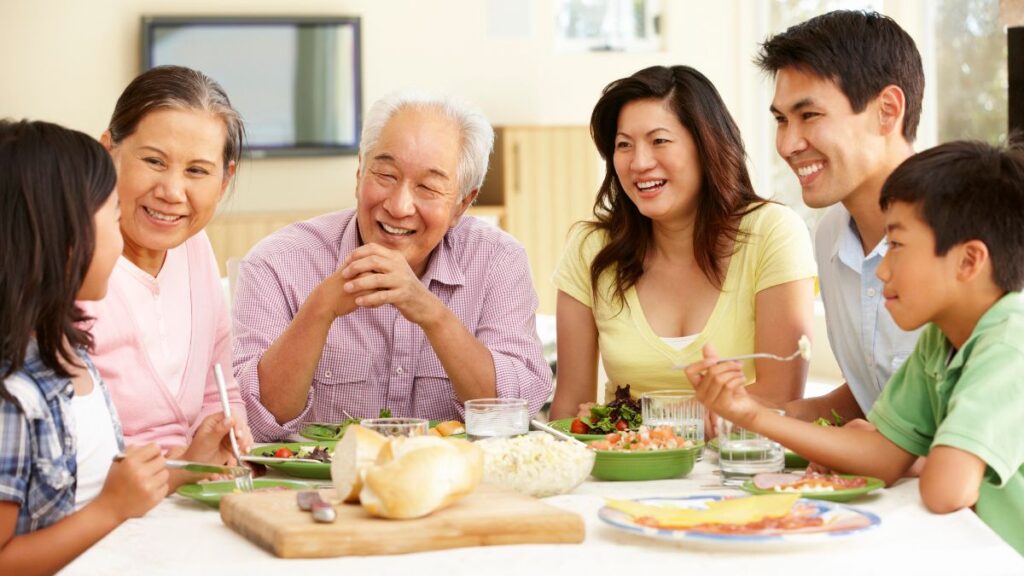15 Etiquette Rules People Believe Are Outdated And Need to Go
Etiquette rules have long guided social interactions, offering a framework for polite and respectful behavior. However, some traditional rules are increasingly seen as outdated or irrelevant as society evolves.
What was once considered essential for good manners may now seem overly formal or unnecessary in modern times.
In this listicle, we explore 15 etiquette rules that people believe are outdated, discussing why they have fallen out of favor and how social norms have changed.
Always Addressing Strangers with Formal Titles

The rule of always addressing strangers with formal titles like “Mr.,” “Mrs.,” or “Miss” is becoming less common. People prefer to use first names in many social and professional settings to create a more relaxed and approachable atmosphere.
The shift towards informality reflects changing workplace dynamics and the desire for more egalitarian interactions. However, certain formal contexts, such as legal or diplomatic, still adhere to this rule. Overall, the trend is towards more personalized and less hierarchical communication.
Men Always Paying for Dates

Many people see the expectation that men should always pay for dates as outdated, especially in an era of gender equality and financial independence. More couples now prefer to split the bill or take turns paying to reflect a more balanced relationship.
This shift challenges traditional gender roles and promotes mutual respect and partnership. While some still adhere to this rule out of habit or personal preference, it’s no longer seen as a universal standard. The focus is now more on mutual agreement and comfort in financial matters.
Standing Up When a Woman Enters the Room

The custom of men standing up when a woman enters the room was once a sign of respect and chivalry. Today, it is often viewed as unnecessary and overly formal. Modern etiquette emphasizes mutual respect regardless of gender, making this rule feel out of place in many social contexts.
Such gestures can be seen as reinforcing outdated gender norms. Respect is now demonstrated through equal treatment and consideration rather than specific gestures tied to gender.
No Elbows on the Table

The rule against placing elbows on the table during meals is increasingly seen as old-fashioned. While maintaining good posture and table manners is still essential, many people find this rule overly strict. The focus has shifted to more practical and flexible dining etiquette, prioritizing comfort and enjoyment.
This change reflects a broader trend towards more relaxed and informal dining experiences. The emphasis is now on being considerate and engaging during meals rather than adhering to rigid rules.
Always Sending Handwritten Thank-You Notes

Handwritten thank-you notes were once a staple of polite society, but the rise of digital communication has made this practice less common. Email and text messages are now widely accepted for expressing gratitude, offering a quicker and more convenient alternative.
While handwritten notes are still appreciated for their personal touch, they are no longer seen as a necessity. This change reflects the fast-paced nature of modern life and the evolving ways we connect with others. The key is sincere appreciation, regardless of the medium.
Using a Full Place Setting for Every Meal

Many view the tradition of using a full-place setting, including multiple forks, knives, and spoons, for every meal as overly formal. Casual dining and minimalist table settings are now more popular, reflecting a preference for simplicity and ease.
This shift aligns with the modern lifestyle, where convenience and practicality often take precedence. Formal place settings are now reserved for special occasions rather than everyday meals. The focus is on creating a pleasant dining experience without unnecessary complexity.
Men Removing Hats Indoors

The rule that men should remove their hats indoors, especially in formal settings, needs to be updated. With the rise of casual fashion and the blending of traditional gender norms, this custom has lost its significance. Hats are now often considered part of personal style and expression, making this rule feel restrictive.
While some formal institutions may still enforce this etiquette, it’s largely ignored in everyday life. Respect and consideration are demonstrated through actions and behavior rather than specific dress codes.
Women Wearing Hats and Gloves to Church

The tradition of women wearing hats and gloves to church was once a sign of modesty and respect. Today, this practice is largely considered outdated, with modern fashion trends favoring more casual and comfortable attire.
The emphasis in many religious communities has shifted towards inclusivity and acceptance rather than strict dress codes. While some may still choose to follow this tradition, it’s no longer a widespread expectation. The focus is now on the spirit of worship rather than specific attire.
Standing When Someone Leaves the Table

Many people view standing when someone leaves the table as overly formal and unnecessary. In modern social settings, such gestures are often replaced by simpler expressions of politeness, such as a nod or a verbal acknowledgment.
This change reflects a preference for more relaxed and practical interactions. While standing may still be practiced in specific formal or traditional contexts, it’s not a common expectation. The emphasis is on maintaining a pleasant and respectful atmosphere rather than following rigid rules.
Sending RSVP Cards for Invitations

With the rise of digital communication, sending RSVP cards for invitations is becoming less common. Email, social media, and event-planning websites offer quicker and more convenient ways to respond to invitations.
This shift reflects the fast-paced nature of modern life and the need for efficiency. While RSVP cards are still used for very formal events, they’re no longer considered essential for most occasions. The key is timely and clear communication, regardless of the method.
Addressing Couples as Mr. and Mrs.

Addressing couples as “Mr. and Mrs.” followed by the husband’s last name is seen as outdated and gender-biased. Many people now prefer to use both partners’ names or simply their first names to reflect equality and individuality.
This change aligns with modern views on gender roles and partnerships. The traditional form of address can feel exclusionary and old-fashioned in contemporary contexts. The focus is now on mutual respect and acknowledgment of each individual’s identity.
Formal Dress Codes for Travel

The tradition of dressing formally for travel, such as wearing suits and dresses on airplanes, needs to be updated. Modern travel attire prioritizes comfort and practicality, with casual clothing being the norm.
This change reflects the more relaxed and accessible nature of travel today. While certain travel situations, such as business trips, may still require formal attire, it’s no longer a general expectation. The emphasis is on convenience and personal comfort.
Writing Thank-You Notes for Job Interviews

Writing thank-you notes after job interviews was once considered essential for demonstrating gratitude and professionalism. Today, email thank-you notes are widely accepted and often preferred for their immediacy.
This shift reflects the fast-paced nature of the job market and the efficiency of digital communication. While handwritten notes can still make a positive impression, they’re not seen as necessary. The focus is on timely and sincere appreciation, regardless of the format.
Women Sitting with Legs Crossed at the Ankles

The rule that women should sit with their legs crossed at the ankles to maintain modesty is increasingly seen as outdated. Modern etiquette emphasizes comfort and practicality over strict posture rules.
This change reflects evolving views on gender norms and personal expression. While maintaining good posture is still important, the specific rule about crossing ankles is largely ignored. The focus is on being respectful and comfortable in social settings.
Using Multiple Utensils for Different Courses

Many people view the tradition of using multiple utensils for different courses during a meal as overly formal. Casual dining trends favor simplicity and convenience, with fewer utensils being used.
This change reflects a more relaxed approach to dining and a focus on the overall experience rather than strict adherence to formal rules. While multiple utensils are still used in fine dining, they’re rare for everyday meals. The emphasis is on enjoying the food and company.
20 Foods No One Can Afford Anymore Due To Inflation

With the ever-rising living costs, some foods have become luxury items that only the wealthiest can afford. From exotic delicacies to once-affordable staples, the price hikes have made certain foods out of reach for the average consumer.
20 Foods No One Can Afford Anymore Due To Inflation
15 Foods Only The Wealthy and Elite Can Eat Now

Culinary trends are constantly evolving, and some foods have become more than just sustenance—they’ve become status symbols reserved for the elite.







